15 Sales Engagement Best Practices to Crash Your Sales Goals
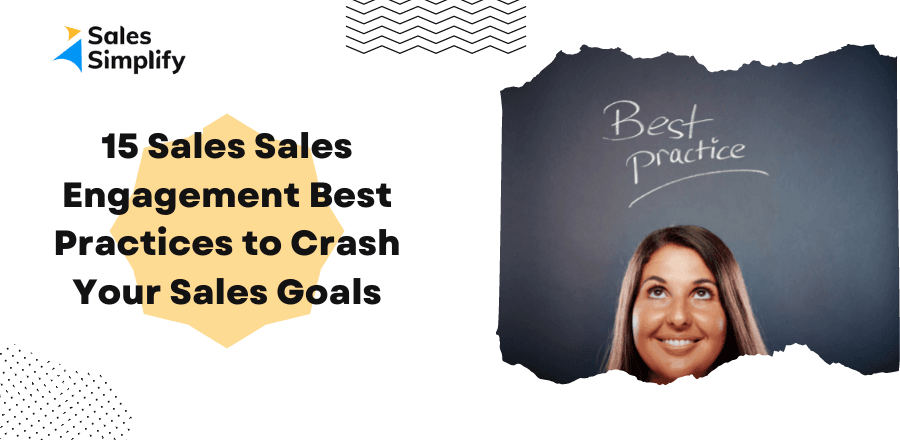
Recently, are your sales representatives struggling to fulfill the sales quota? Or are your sales representatives facing excessive objections while interacting with the prospects? You might need to rethink your sales engagement policies and embrace sales engagement best practices.
In most scenarios, SDRs need to establish multiple touchpoints to gain the trust of the prospects before they finally make their decision to purchase. Sales touch points may include several types of communication, such as emails, calls, product demos, social media interaction, etc.
With each interaction, your sales reps push the prospect one step closer to a won deal.
The interaction strategies, channels, methods, and tools that your sales team uses while communicating with the prospects as they advance through the sales pipeline are collectively defined as sales engagement.
But what does the sales engagement process involve? And most importantly, what sales engagement tactics can you integrate to close more deals? We've got the answers ready for you! Keep reading to find out!
Types of sales engagement
The sales engagement process begins with the first interaction your SDRs make with a prospect and concludes when your sales team passes a new customer to the success team.
The ultimate goal of the sales engagement is to get a positive response from the leads and move the deal toward closure.
Different types of sales engagement could include:
- Sending personalized emails
- Scheduling and hosting meetings
- Presenting a product/service demo
- Direct phone calls for follow-ups and updates
- Leaving voicemails
- Responding to comments on social media
Sales engagement also encompasses interactions originating from the prospect's end, mostly generated through automated lead-capturing strategies. These include:
- Filling out a contact form on your website or landing page
- Interacting with a chatbot such as the Zixflow Lead bot
- Being added to an email sequence such as newsletters or blog updates
- Using a scheduling tool to schedule a meeting with your company consultants
With such innumerable dynamic elements, how can you ensure your adopted sales engagement strategy instills trust in your leads and helps in converting them to customers?
15 sales engagement best practices to skyrocket your deal winning rates
Let's discover best practices for sales engagement to improve the engagement process and achieve stellar business results:
Evaluate your existing data
Unless you've just started your entrepreneurial endeavor, you'll have the opportunity to learn from past shortcomings and successes.
Access and carefully examine your previous deal wins and losses. For example, you can analyze the historical data to find answers to the following questions:
- Which sales management tactics led to the highest conversion and consequently generated the most revenue for your company?
- Which types/sections of customers responded the most to your sales pitch?
- Were there specific months or seasons where the sales numbers significantly went upward?
- Which engagement channels worked best for winning a deal?
- How many touch points were required on average to close a deal?
- What were the primary reasons to lose a deal?
- Which team members/ managers/ SDRs were most successful, and why?
- Which areas delivered the greatest ROI for your team?
Evaluating and deriving valuable insights from your historical data will help you to get a better picture of what elements are performing exceptionally and where you need to make amendments.
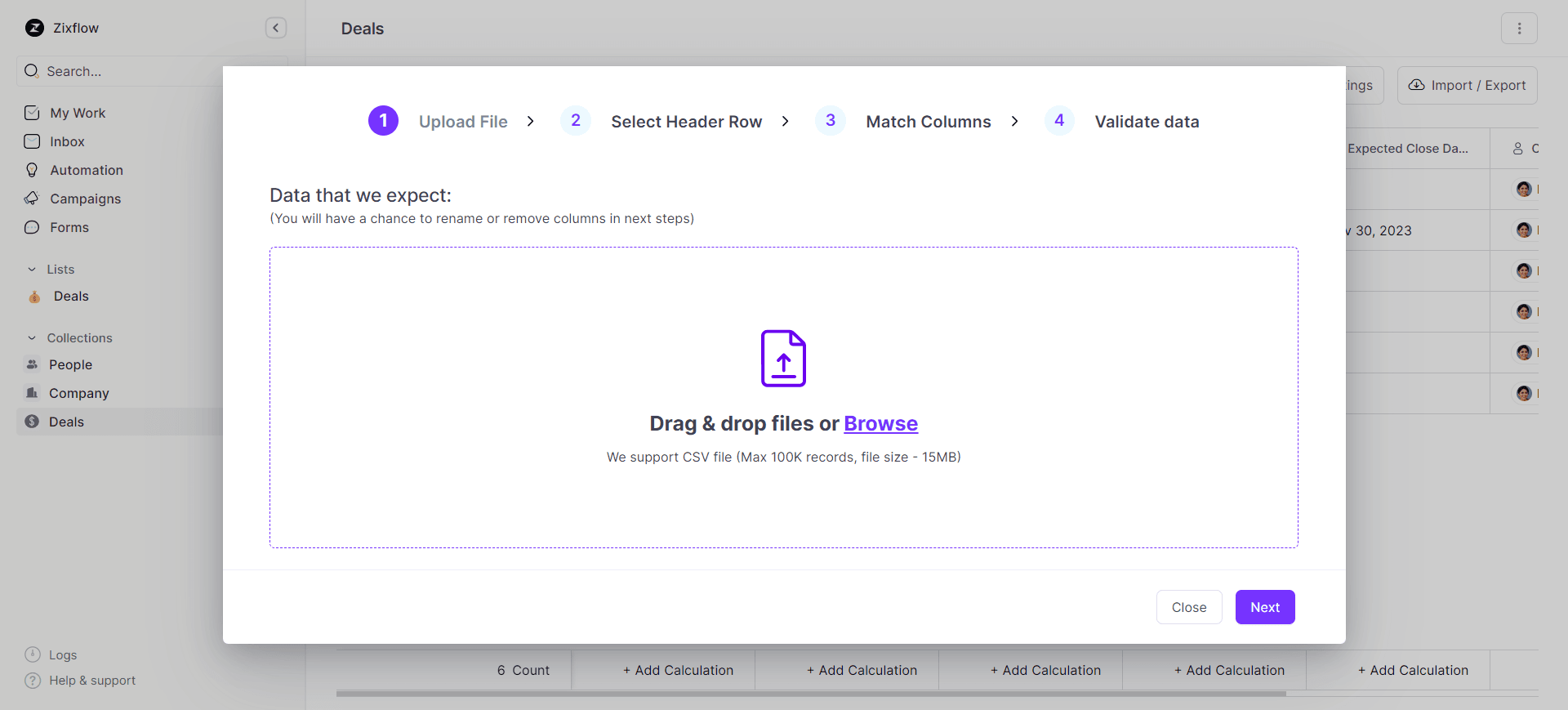
Set measurable and realistic goals
There's a popular proverb that says, "Failure to make a plan is actually a plan to run towards failure."
Once you've evaluated your historical data and determined what you've accomplished, you need to make plans for your next move.
How would you know that you're headed in the correct direction if you haven't determined a destination? When it comes to implementing the best techniques for sales engagement, defining objectives should be one of your top priorities.
With a precise understanding of your initial benchmarks and overall objective for your sales engagement strategy, you can adjust metrics to meet your sales goals.
For instance, if your ultimate goal is to increase more closed sales, then you might need your reps to focus on outbound sales campaigns such as making more outreach calls or sharing emails.
The greater number of calls you make or emails you share will increase your chances of sales.
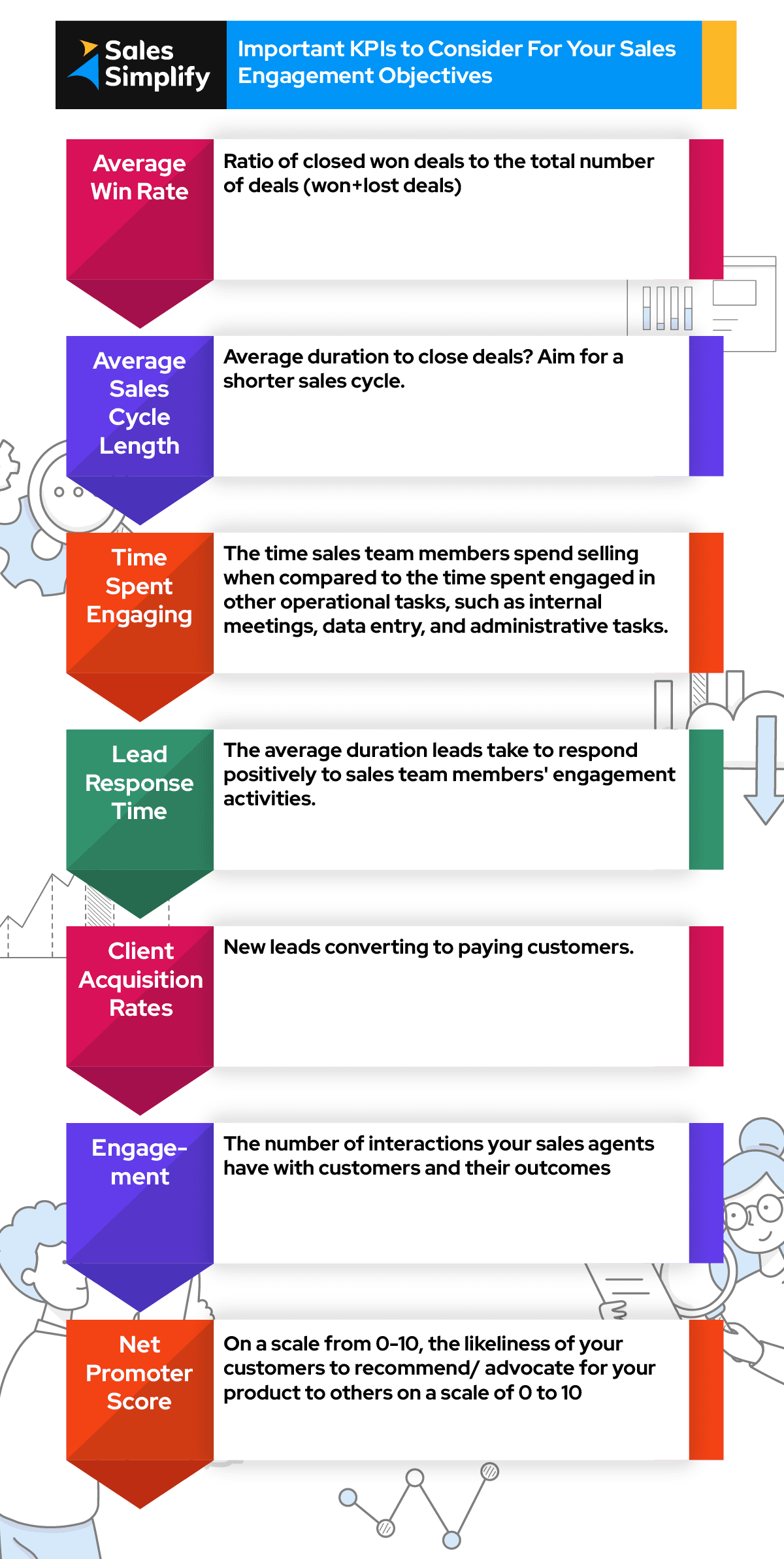
Understand your product inside out
When it comes to sales engagement, knowing your product inside out is critically essential. After all, you can't successfully prepare engagement scripts for something that you don't know.
By taking the time to understand your product, you can enhance your sales and reach your business goals. So don't be hesitant to dig deep. It could be the key to success.
Here are some generic questions to get you started:
- What are the features of your product?
- How does the pricing justify the features of your product?
- What are the USPs?
- What pain points is your product addressing?
- What tech stacks are your product using?
- What is the learning curve for adapting your product?
- How can your product be implemented within an organizational structure?
Know your target market
Knowing the likes and dislikes of your target market is essential to implementing a customer engagement strategy that'll actually bring you success.
So how to identify your target market?
- Start by looking at and evaluating who your current customers are.
- Next, consider your sales goals and ask which leads are most likely to help you attain those goals.
Once you have a precise idea of the target market, you can start tailoring sales engagement strategies specifically for them using tools like sales cadence of Zixflow. For example, if you're targeting B2B startups, sharing engagement messages over LinkedIn and email might be a great option.
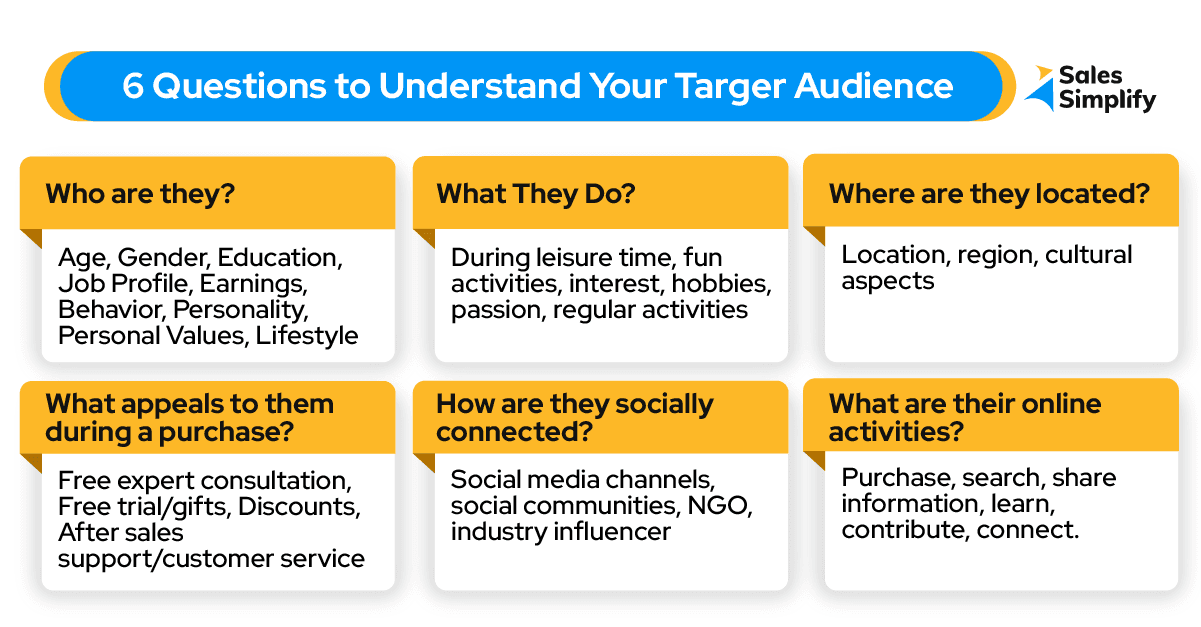
Pay special attention to your competition
In the sales and marketing universe, it is equally important to understand your competitors, like your customers.
How are they engaging with their customers? Which platform are they choosing for maximum engagement? What engagement activities are not currently used by your competitors? How's your target market responding to your competitor's engagement activities?
By researching in-depth about your competitors, you can adjust your own sales engagement techniques and increase your chance of success. A web crawler can support this process by automatically collecting and analyzing competitor data from various platforms.

Identify your weak points
Most enterprises try to enhance the positive and strong components of the sales engagement strategy, which is surely a great practice. But focusing on the weak point is also necessary.
For example, you might find email engagement is working extremely well for your closing deals. But the sales calls aren't bringing much traction! So what's the problem? Is it the timing of the call? Frequency? Or the way the sales reps initiate the conversation and interact over the call? What about the listening skills of your SDRs?
Addressing what's going wrong with sales calls can increase opportunities for your sales team to crack more deals.
So, instead of just nurturing the positive aspects, also focus on areas that require improvement.
Create a value proposition
If you want your customers to invest financially in your product, you need to adopt a value-based selling strategy. Create a sales statement that clearly explains the value provided by your product or service.
Remember value proposition isn't a technical list of features and specs. It should contain all the benefits your potential customers can enjoy if they purchase your product or service.
Here's what you can consider while preparing your sales engagement content:
- Identify your target market's main problems
- Identify the primary benefits/ USP of your product
- Explain what makes these benefits valuable for your target market.
- Align this value with your target audience problems;
A “so what” table can be useful. Here’s an example:
Time management can be a real savior
The time your sales team spends on actual selling is precious. However, repetitive sales-related activities and administrative tasks take a huge bite from that pressure selling time.
With sales engagement tools, it's possible to incorporate time management in sales by introducing automation. Consequently, your sales representatives will have more time to plan and strategize the important sales engagement activities rather than spend time on repetitive tasks such as sending follow-up emails.
Due to restricted selling time, sometimes, the sales representatives might overburden prospects with product information. Avoid doing that.
Strategically, customize the placement of product information with the natural flow of the conversation. Sharing information related to your product might not be a great idea during the initial phases of sales engagement. In the preliminary phases, your prospects will want to know about the current market updates, the pain points, and how modern tools/services cater to their pain points.
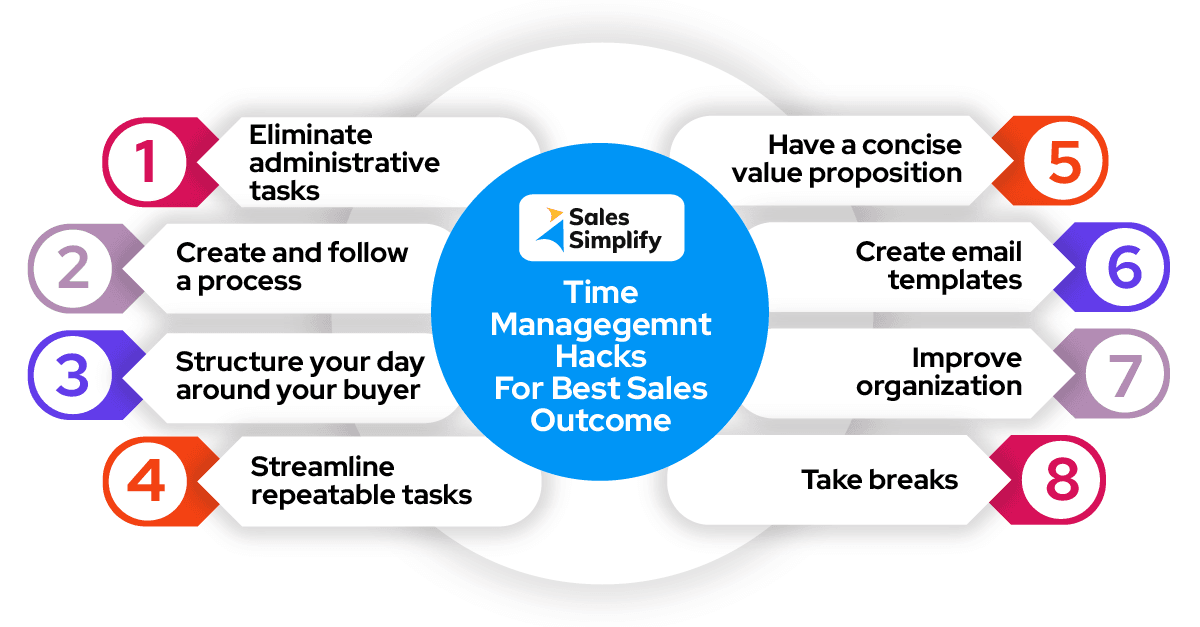
For example, you are selling online courses for backend engineering. During preliminary sales interaction, you can share information about different job roles related to backend engineering available in the market, the demand for backend development skills in the market, and how upskilling can significantly impact a student's future career.
In this way, you will share relevant information rather than stuffing your prospect with excessive unnecessary details. This will reflect the fact that you are actually interested in understanding and solving the prospect's problem. Once they feel understood, your prospect will be more likely to invest in your business offerings.
Empower your sales team with the skill education
Interestingly, 55% of sales professionals lack the right skill sets to become successful in the domain. (Source-Brevet Group). Learning new skills and adapting to the evolving requirements of the customers is a part of the job.
Not just sales training but continuous sales engagement also sharpens the selling skills of SDRs. Therefore sales enablement and sales engagement go hand-in-hand. An effective sales engagement
Here are a few ways to upskill and educate your salesforce:
- Give access to certification courses.
- Motivate to sign up for informational blog updates from leading sales engagement platforms.
- Arrange visits to workshops and conferences.
- Share online self-learning video resources.
Personalization can be a game changer
Cookie-cutter email templates are a thing of the past! Your sales team needs to focus on personalizing the engagement messages in a way that reflects the content that was specially crafted for your prospects considering their requirement and interest.
Simply inserting the name of your prospect in the temperate message or in the subject line Is Not enough personalization. Craft bespoke messages for each prospect keeping their pain points in mind.
However, creating an email for each and every prospect might not be a practical solution.
Using a template with customizable sections is a great choice. You can also use a set of versatile predefined templates representing different tonalities to cater to various persons in your target audience.
Ditch the robotic and transactional sales tonality
The first and foremost thing you really need to remember during your sales interaction is that you are selling a product to humans and not to companies or fancy glass buildings.
Don't forget to combine the elements of fun, wit, and professionalism during sales engagement interactions. This makes you sound human and appealing rather than having a transactional tonality.
Making small humorous talk with pop culture references can break the ice, especially if you've done your research, know what interests them, and play on them.
You could also send out personalized useful resources (email templates, merchandise, small gifts) that won't put a hole in your pocket but will put a smile on your prospects' faces.
Marketing and sales go hand-in-hand
Relation between your sales and marketing team is essential for successful business outcomes. Here are some activities that your sales team needs to execute in tandem with marketing professionals:
- Create the profile/persona of your perfect customer and adhere to it.
- Create a user journey for the target market segment. Your marketing and sales team will know who should interact with customers and at which point of the customer journey.
- Let the marketing team break the ice! Let marketing take the lead by spreading awareness about the product. Only after that direct your sales professional to engage through cold calls, emails, etc.
- Take inputs from the customers' feedback to adjust your sales strategy.
Use sales engagement tools
Now that you know most of the best practices of sales engagement, it's time to integrate sales tools and platforms to make the workflows streamlined.
Here's how sales engagement tool such as Zixflow can be helpful:
- Help teams track their sales interactions with crucial clients and customers.
- Help find new prospects that match your ideal buyer profile across different sales channels and territories.
- Reduce the requirement to invest time in administrative tasks.
Here’s a quick video of what you can do with Zixflow
Confidence is essential
It's not a new practice in a sales engagement. Confidence can be impressive. After all, if you don't believe or have enough confidence in what you're selling, why would someone else purchase it?
However, being confident doesn't mean merely pushing your product and saying it is the best. It's about saying the right thing at the correct time in the most suitable way. Understanding your customer plays a very significant role in increasing your confidence during sales engagement.
You can also prepare scripts, register for speaking sessions, and discuss ideas with colleagues to increase confidence during sales engagement.
Building your confidence will make a world of difference!
Stay updated on industry news and market trends
It's not a luxury but a necessity to stay up-to-date on industry news and market trends. Today, your online users are information savvy. And as a salesperson, you need to have a higher knowledge of the industry to build trust.
Understanding trending sales strategies and goals can help shape your own sales objectives. Consequently, your sales engagement activities will resonate with the current market and buyer psyche.
Get the hang of the current sales engagement model in the market which other businesses are using and apply it in your engagement strategy.
Many buyers find knowledgeable salesmen more impressive, even if their product is average.
Here are a few simple ways to do it:
- Join an online community where leaders and peers discuss current events.
- Attend industry events.
Fortunately, in the era of digitization, there's no shortage of resources to enrich your knowledge. You can find various podcasts based on sales engagement practices on various platforms.
Make sales engagement interesting with Zixflow
Knowing how to improve and inject sales engagement best practices requires careful planning, the right technology stack, and an open mindset. Businesses should be willing to proactively explore solutions that'll help address sales engagement challenges.
Leading end-to-end sales engagement tools such as Zixflow are improving multi-channel sales engagement through a comprehensive suite of sales tools and marketing integrations.
Try it for free to experience how sales engagement best practices lead to better customers!
